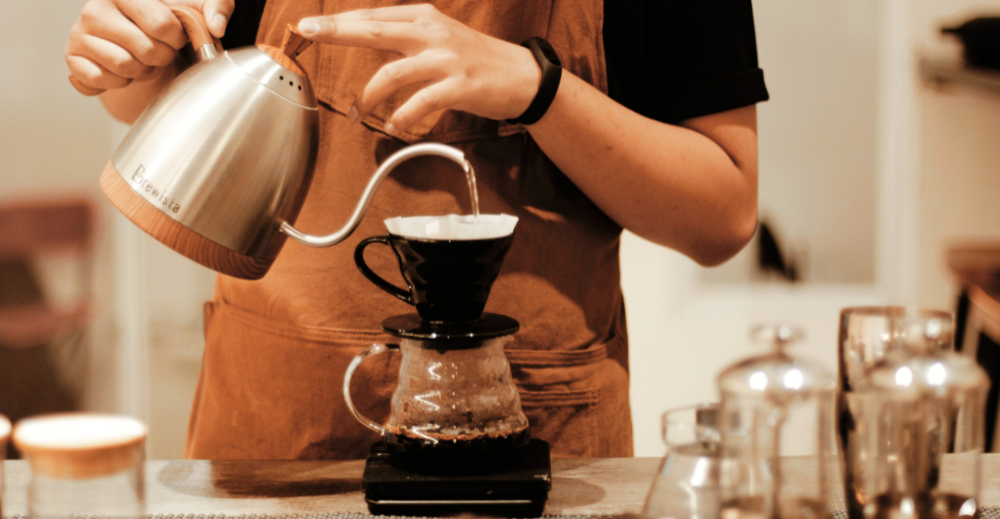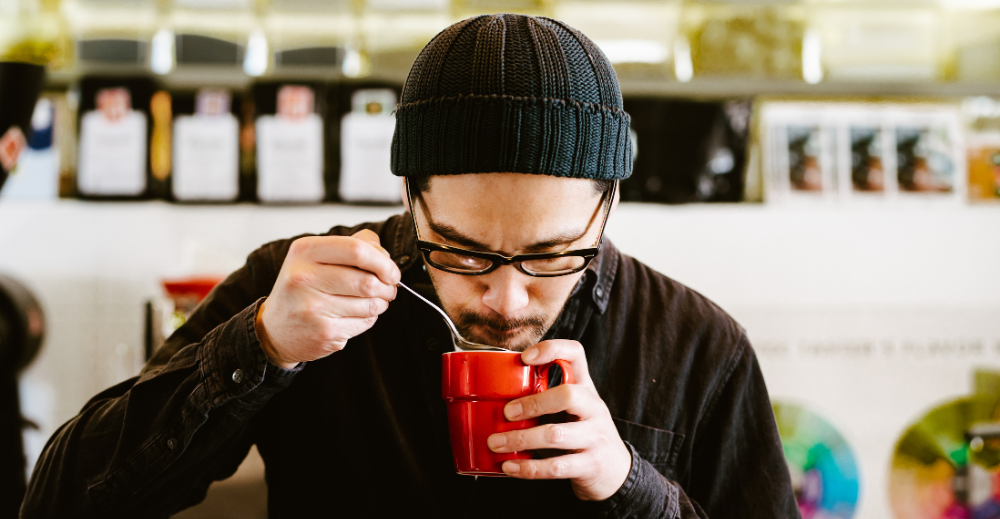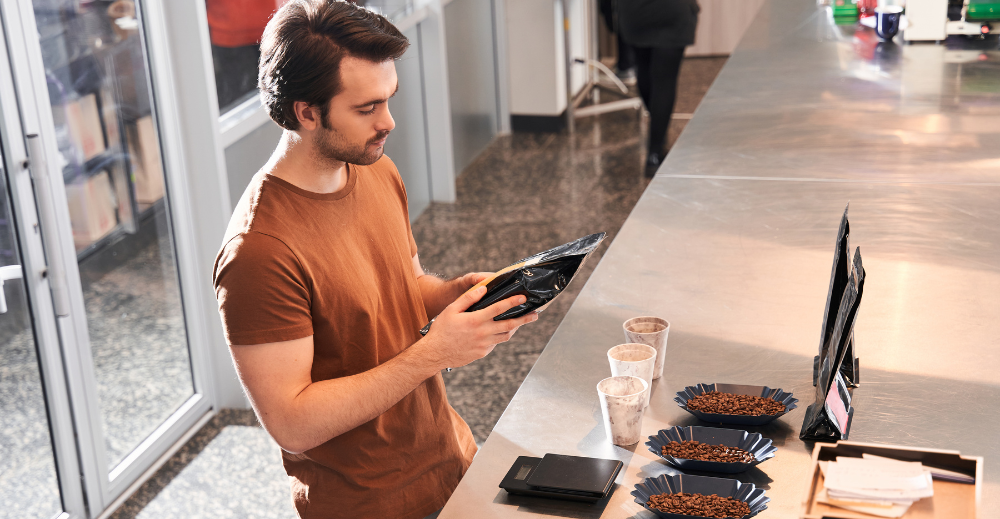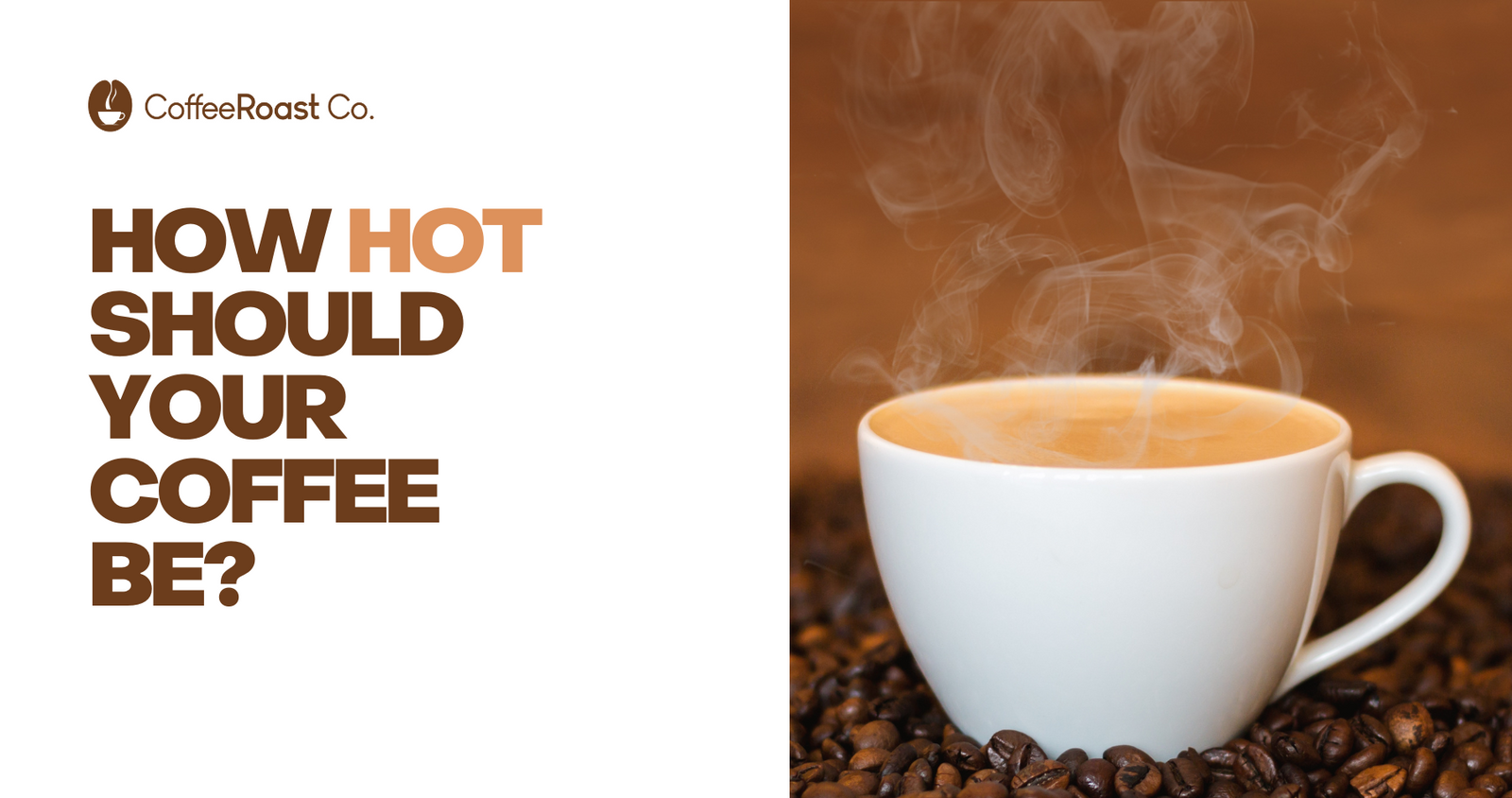Coffee Lovers! Have you ever held a steaming cup of coffee and thought, "How hot should this coffee be?" It's not as simple as it seems. The right temperature significantly impacts the taste and your overall experience and saves you from burning your tongue.

So, get ready! We're about to go deeply into the subject of coffee temperature. We'll explore how heat affects brewing, flavor, and more. Whether you're a casual coffee drinker or a seasoned barista, this journey will elevate your coffee game. There's a latte to learn! Let's find the perfect temperature for your coffee.
The Ideal Coffee Temperature: Why Does It Matter?
You might be thinking, "Why all this fuss about coffee temperature? Isn't coffee just coffee?" If only it were that simple!
Not only does temperature affect brewing coffee, but it also plays a role when you serve coffee. Certain brewing methods have recommended temperatures to ensure the best flavors when sipping hot coffee.
Think about it this way: how do you feel when it's too cold or too hot outside? Uncomfortable, right? Similarly, coffee grounds - those sensitive little things - react differently at different temperatures.
Get the water too hot, and you might over-extract the coffee, leading to a bitter taste. Too cold? You might under-extract it, making your brew coffee weak and underwhelming.
No one wants bitter or bland coffee. That's why getting the right temperature is crucial in brewing coffee. It ensures you extract the perfect flavors from the coffee grounds. It's the fine line between a mediocre and a magical cup of coffee.
How Does Heat Impact the Science of Coffee Brewing?

It all starts with the boiling water. When heated to the right temperature, the water interacts with the coffee grounds to extract their flavors.
The Extraction Process:The role of water temperature isn't just a minor detail; it takes center stage in the extraction process. Imagine it as the director of an orchestra commanding the performance. I
f the water's too hot, it becomes an overactive conductor, extracting too much and inviting bitterness into your cup. If it's too cool, the performance is dull and lacks depth, resulting in a flat-tasting coffee.
Unlocking Flavors:Think of heat as a master key. When the temperature is right, it unlocks a perfect balance of flavors in your coffee. It's like music to our taste buds!
The Chemical Reactions:Brewing coffee sets off a complex dance of hundreds of compounds. The sugars and oils in the coffee break down when heated correctly, adding layers of flavor to your cup.
So, the next time you brew coffee, remember you're not just making a drink. You're conducting a symphony of science! And the baton controlling that symphony is the temperature!
What Are the Ideal Temperatures for Different Brewing Methods?

Let's talk about how the brew temperature rules the roost in different brewing methods.
Drip Coffee: Starting with the classic drip brewing, the sweet spot tends to be between 195 to 205 degrees Fahrenheit (90-96 degrees Celsius). This brewing temperature range helps to extract just the right amount of flavor, making your coffee taste perfectly balanced. Not too weak, not too strong - just right!
French Press: Transitioning to the French press, it also likes it hot, with an ideal range of 195 to 205 degrees Fahrenheit (90-96 degrees Celsius). This method involves steeping, so hot water helps to extract those flavors more efficiently during the longer brew time.
Espresso:And then we have the Espresso, a bit of a diva and likes it really hot. We're looking at around 190 to 204 degrees Fahrenheit (88-96 degrees Celsius) to create that intense, full-bodied shot we all love.
What Factors Can Affect Coffee's Ideal Brewing Temperature?
Brewing temperature plays a starring role in your coffee flavor, but some behind-the-scenes factors influence the taste of your coffee. Let's break them down:
-
Type of Coffee Beans: Different beans, different flavors, right? But it's not just that. Different types of beans also prefer different temperatures. Light roasts usually need higher temperatures than dark roasts for optimal extraction. Why? Light roasts are denser, and hotter water helps get those flavors out.
-
Grind Size: Think of grind size as the gatekeeper of flavor. The finer the grind, the more surface area is exposed, and the more flavor can be extracted. So, a fine grind may need lower temperatures than a coarse grind. But remember, if the water's too hot with a fine grind, you might over-extract and end up with a bitter taste. It's all about balance!
-
Water Quality: Not all water is created equal! The minerals in your water can affect how it interacts with the coffee during extraction. Hard water can often lead to under-extraction, while soft water may over-extract. But don't stress too much. Most tap water should do the trick, but if you want to experiment, try brewing with bottled or filtered water and see if you taste the difference!
These factors might sound small, but they can make a big difference in your hot cup. So next time you brew, play around with these variables a bit.
How Can You Maintain the Perfect Coffee Temperature?
Diving deeper into the realm of coffee, it's not just about the brew itself but how you maintain its essence. Here are some pointers to ensure your coffee's temperature remains just right.
Finding Precision with Temperature Control Equipment:Trying to guess your water temperature is a risky game (and not in a fun way). Consider investing in some dedicated equipment to make things simpler and more precise.
A good kitchen thermometer or a variable temperature kettle can do wonders in helping you hit the best temperature.
Keeping Coffee Hot After Brewing: Once you've crafted that perfect cup, the mission shifts to preserving its warmth. A thermal carafe or a mug with good insulation can keep your coffee at an ideal temperature for longer.
Just remember, don't keep your coffee on a heating plate or stove. That'll just overcook your brewed coffee and can make it taste bitter.
Serving Temperature and Taste Perception: Here's an interesting tidbit: The temperature at which you drink coffee can also affect how it tastes. Hot coffee can seem to have a stronger flavor, while cold brew might seem milder.
As your coffee cools, different flavor notes can become more noticeable. That's why it's fun to savor your coffee and let it cool a bit.
Mastering the nuances of coffee temperature might feel like an art, but with the right tools and understanding, it's an art you can perfect in no time!
How Does Temperature Influence Coffee's Taste?

Let's just say the temperature is kind of like a conductor in a symphony of flavors. So, how does it work?
Each coffee is like a treasure trove of flavors waiting to be unveiled. And the temperature is the key to the treasure! A higher temperature tends to coax out robust, darker flavors, while a lower temperature have a knack for spotlighting the lighter, more delicate notes. That means you can tune your coffee's temperature to hit those flavor notes you love the most!
Now let's talk bitterness and acidity - two heavyweight champs in the coffee flavor arena. They have a pretty intriguing relationship with temperature. Higher temperatures tend to pull out more of the bitter compounds in coffee, while lower temperatures can underscore acidity. That means if you're a fan of strong, bold coffee flavors, you'll want to aim for a higher temperature.
If your taste buds lean towards something a bit brighter and tart, you might want to take the temperature down slightly. It's all about pulling the right coffee temperature levers to strike your perfect balance!
In other words, perfecting the relationship between temperature and flavor may greatly improve your coffee experience. Understanding their dynamics and modifying them as necessary are the main goals of this journey.
Temperature's Crucial Part in Your Coffee Journey

Understanding and controlling the temperature for coffee is like getting a backstage pass to the concert that is coffee brewing. You're no longer just a spectator. You've got the power to tweak and fine-tune your brew like never before.
Coffee brewing is part science, part art, and a whole lot of fun. So, go on and try brewing your coffee at different temperatures. Maybe you won't get it perfect the first time, the second, or even the third. But that's okay! It's all part of the journey. And when you hit your personal preference, it's all worth it.
We're here to be part of your coffee journey. So, share your temperature tales, insights, or coffee queries in the comments below. And for those hungry for more, CoffeeRoast Co. is a treasure trove of coffee knowledge. Browsing our blogs might help take your coffee game to the next level.
So as you move forward, remember to keep experimenting, exploring, and, most importantly, enjoy drinking coffee!






留个言